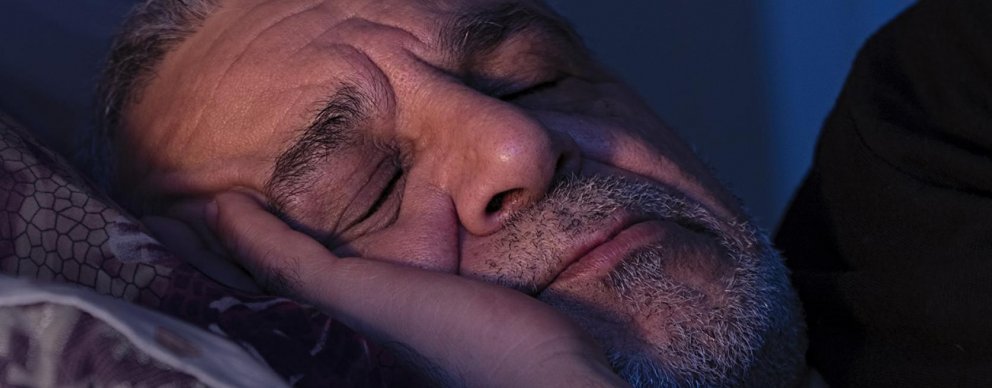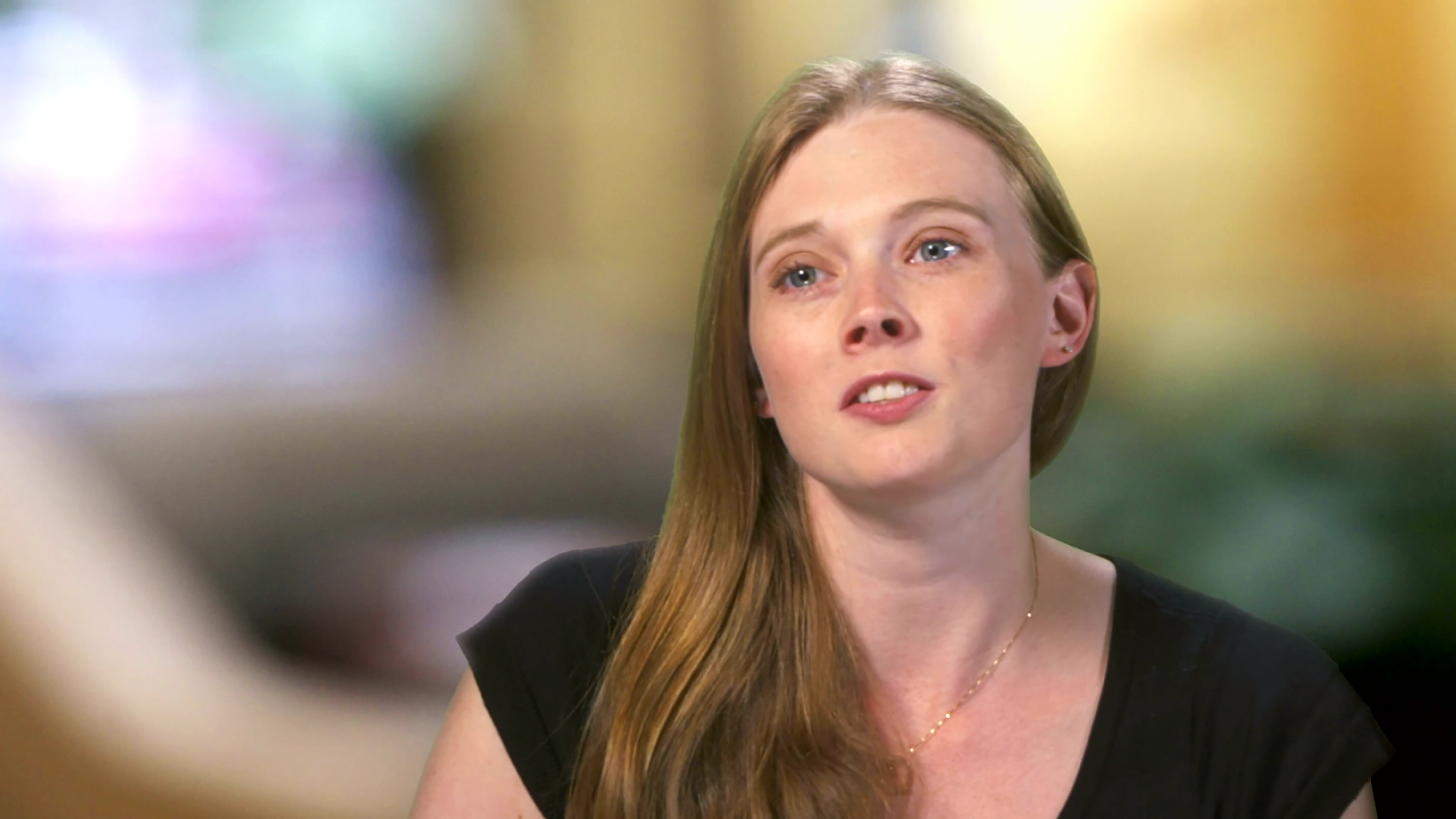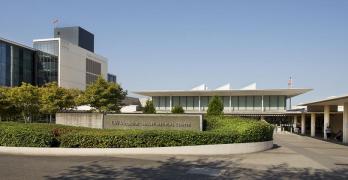Sleep Medicine
Evaluation and treatment for insomnia, restless leg syndrome and other sleep disorders

Clinical care and research to help you rest easy.
Sleep Experts
We’re accredited by the American Academy of Sleep Medicine and offer an extensive level of expertise and treatments that extend from common-to-complex sleep conditions.
Our Team, Your Sleep
Your clinical team includes board-certified sleep specialists, including providers who also have training in lung, nervous system, or ear, nose, throat, head and neck function.
Sleep Quality Matters
Sleep is a vital part of staying healthy. Our nationally recognized team delivers innovative and effective care that will boost the quality of your sleep and improve your health.

Meet the provider: Vanessa Carey, A.R.N.P.
Vanessa Carey, A.R.N.P., M.S.N., is a board-certified nurse practitioner and Washington native. She works at the Sleep Medicine Center where she strives to help her patients sleep better and achieve their wellness goals. View full bio.
Some of our common services:
Our bodies operate on a cycle run by an internal body clock, which closely mirrors the length of a full day. This 24-hour cycle is called a circadian rhythm. Circadian means “around the day” in Latin. Most of us feel alert when it’s light outside and experience a need to rest when it’s dark. But in circadian rhythm disorders, the body’s internal clock is out of sync with day and night, causing a disruption in normal waking and sleeping times.
About 90 million Americans suffer from snoring during sleep. While half of these people are “simple snorers,” the other half may have a serious sleep disorder called obstructive sleep apnea (OSA). While OSA will almost always lead to loud and frequent snoring, snoring does not always indicate OSA. Treatment of OSA often involves continuous positive airway pressure (CPAP). CPAP is a blower connected by a tube to a mask that fits over the mouth or nose, blowing air so that continuous pressure in the airway is maintained. If you or your partner experiences any symptoms of snoring or sleep apnea, consult a doctor.
Insomnia literally means “sleeplessness” and occurs when you have difficulty falling asleep or staying asleep. Insomnia may be temporary or it may be recurring— what doctors call “chronic.” Even during sleep, the brain is still active, moving through the stages of what is known as the sleep cycle. The sleep cycle has five recognized stages, and a full cycle lasts about 90 minutes. During the course of a typical night, a person goes through several sleep cycles. If you suffer from insomnia, you are not alone. By some estimates, one out of every four Americans deals with temporary insomnia, and one in 10 suffers from chronic insomnia.
Narcolepsy is a disorder of the central nervous system in which abnormal brain chemistry disrupts the normal wake/sleep cycle. People with narcolepsy often feel excessively sleepy during waking hours. In fact, they usually feel strong urges to sleep several times a day. If the urge becomes overwhelming, they can stay asleep for a few seconds or a few minutes. In rare instances, sleep attacks can last an hour or longer. Sudden bouts of sleep can occur at any time and in just about any situation. Narcolepsy occurs in about one out of every 2,000 Americans with the first symptoms usually appearing in young adults between the ages of 15 and 30.
The term “parasomnia” refers to all the abnormal things that can happen to people while they sleep, apart from sleep apnea. Some examples are sleep-related eating disorder, sleepwalking, nightmares, sleep paralysis, and REM sleep behavior disorder. Parasomnias can have negative effects on people during the daytime, including sleepiness. Parasomnias affect approximately 10 percent of Americans. They occur in people of all ages, but are more common in children.
Inform yourself to make the best choices for your health and care with UW Medicine patient education resources.
Emotional support is an important part of your treatment. Support groups and community resources can help you and your loved ones through treatment and recovery.
If your doctor rules out sleep apnea, narcolepsy and other factors that could cause exhaustion (such as mental disorders or certain medications), he or she may consider a diagnosis of excessive daytime sleepiness or insufficient sleep. The best way to address this disorder is to look for its underlying cause. Your doctor may also suggest that you take naps throughout the day when possible, avoid alcohol and consider altering any prescriptions that trigger drowsiness.
Restless leg syndrome (RLS) is a commonly experienced neurological disorder. It is an uncomfortable feeling deep in the legs that can happen when sitting or lying down. The symptoms occur most often during the evening and night. The unpleasant sensations in one, or usually both, legs can range from mild to severe. RLS disrupts sleep and causes daytime fatigue. In addition to bedtime, a person may experience RLS when sitting still for long periods of time, such as during a plane flight or while sitting in a movie theater.
There are three main types of sleep-disordered breathing. Obstructive sleep apnea (OSA) occurs when a patient’s upper airway closes (either partially or fully) but efforts to breathe continue. OSA is the most common form of sleep apnea, affecting more than three in 10 men and nearly one in five women. Central sleep apnea (CSA) occurs when the patient’s airway is open, but respiratory effort ceases due to a decrease in his or her ventilatory drive. Complex sleep apnea occurs when the patient shows signs of both OSA (where the airway is obstructed) and CSA (where no effort is made to breathe).
Sleep apnea occurs when breathing is briefly and repeatedly interrupted during sleep, marked by breathing pauses that last at least 10 seconds. It can cause fragmented sleep, low blood oxygen levels, and the combination of disturbed sleep and oxygen starvation may lead to hypertension, heart disease, and mood and memory problems. Treatments for sleep apnea focus on helping to keep the airway open through therapies or surgery.
Sleep disorders can affect how you think, work, drive a car or any other daily activity. The most common sleep disorders are: obstructive sleep apnea, insomnia, RLS and narcolepsy. If left untreated, some sleep disorders can be fatal. Even though there are nearly 100 different known sleep disorders, most can be treated effectively with the help of our highly-trained sleep specialists.
There are many reasons to be referred to the sleep clinic. Perhaps you are having difficulty falling asleep or staying asleep, falling asleep at work, sleep walking or talking, snoring or feeling excessively restless at night. Or perhaps you are experiencing difficulty concentrating or awakening with morning headaches. Your family doctor may send you to the sleep clinic to have any of these symptoms investigated. The formal name for a sleep study is overnight polysomnography (PSG). During a sleep study, information is collected from a variety of physical systems while you sleep using special sensors. This may include brain wave activity, oxygen and CO2 levels, breathing effort, heart rhythms and muscles tone. Polysomnography is used not only to help diagnose a variety of sleep disorders, but also to learn whether adjustments to treatment plans are needed or if the current treatment plan is effective.
In certain cases after an evaluation, a home sleep apnea test can provide a board-certified sleep medicine physician with the information he or she needs to diagnose obstructive sleep apnea. These tests allow you to sleep at home wearing equipment that collects information about how you breathe during sleep. You will usually set up the testing equipment yourself. There are a variety of home sleep apnea testing devices that have different sensors and equipment. These devices measure your breathing and blood oxygen level. Some also may measure your heart rate or other information about your body.
The multiple sleep latency test (MSLT) objectively assesses excessive daytime sleepiness by measuring how quickly you fall asleep in a quiet environment during the day. Excessive daytime sleepiness occurs when you are sleepy when you should be awake and alert. Our board-certified sleep medicine physicians will recommend an MSLT if they suspect you have excessive daytime sleepiness related to narcolepsy or a hypersomnia.
The Maintenance of Wakefulness Test (MWT) measures a person’s ability to stay awake in a quiet, dark and non-stimulating room for a period of time. This test is usually given to a person receiving therapy for conditions causing daytime sleepiness, such as sleep apnea.
Sleepwalking is also referred to as somnambulism. Sleepwalking is often seen among children, but can occur in people of all ages. By some estimates, up to 15 percent of Americans, or one in seven people, may experience sleepwalking at some point in their lives.

